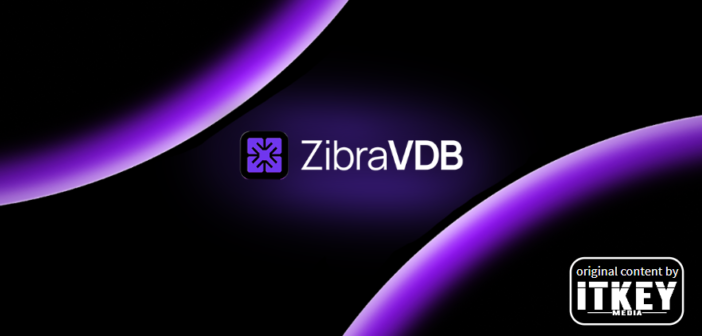- Ukrainian deeptech ZibraAI presents a plugin for real-time rendering of ‘heavy’ VFX volumes
- For now, the solution is commercially available for Unreal
- Alpha testings for Houdini are underway
ZibraAI rolls out its ZibraVDB – the new solution for virtual production studios and game development companies seeking to enhance volumetric VFX integration. This innovative technology enables real-time replay of large VFX volumes stored in OpenVDB format within Unreal Engine, achieving up to 100x compression and rendering times twice as fast as Unreal’s SVT.
ZibraAI in Recap
In 2021, Alex Petrenko, Vladyslav Zavadskyi, and Den Dmytrenko co-founded Zibra AI with a vision to leverage AI to speed up the creation and handling of 3D assets. Their aim was to automate the most labor-intensive aspects of game development, enabling faster game releases and providing developers with a more efficient workflow.
‘Nowadays, games that completely change the industry are rarely released – once every 5 or even 10 years. Mechanics, graphics, physics – there have been no dramatic changes for a long time. Starting Zibra AI with a team, we could realize that its products could revolutionize the game development process by automating many routine tasks for developers and artists. As a result, they could focus on the main thing – generating and implementing breakthrough ideas and technologies that boost the game development industry, ‘ Mr Dmytrenko explains.
This Summer, ZibraAI became the only Ukrainian startup to enter Andreessen Horowitz’ a16z Speedrun acceleration program. Among other benefits, the USD 500K of secured investment allowed the company to expand its production capacity by hiring more tech engineers to create custom features. Apparently, ZibraVDB is one of the results of this talent expansion.
ZibraVDB and Unreal

Kostiantyn Tymoschuk, Head of Growth at ZibraAI
ZibraVDB addresses key challenges in VFX production, including high memory demands and the expense of volume rendering. By compressing VDB sequences and allowing them to load entirely into VRAM, the plugin enhances both storage efficiency and performance. Its high-speed volumetric renderer – up to 2-3 times faster than Unreal’s – enables real-time rendering of VDBs of any scale, making it an invaluable asset for both gaming and virtual production.
‘In the gaming industry, visual progress has been steady but slower in some areas. While Unreal Engine has delivered stunning lighting and high-quality geometry, visual effects have often lagged behind. As Unreal Engine quickly evolves and solidifies its role as a leading content creation platform across industries, ZibraVDB offers significant potential, especially for film and Virtual Production. High-quality volumetric effects can greatly enhance visual impact while reducing costs during content creation—an essential advancement for both gaming and filmmaking,’ ZibraAI’s head of growth Kostiantyn Tymoschuk comments.
ZibraVDB is tailored for professionals in Visual Effects (VFX), Film Production, Virtual Production, and Digital Marketing, especially those working with advanced virtual production techniques. A key challenge for these professionals is achieving high visual fidelity without sacrificing performance, especially in real-time environments like Unreal Engine. High-quality volumetric effects typically require more storage and involve complex integration, creating a difficult balance between quality and efficiency.
ZibraVDB’s solution is an advanced compression technology that dramatically lowers memory and storage requirements while preserving high visual quality. Seamless integration with platforms like Unreal Engine enables users to adopt these tools without interrupting their workflow, promoting both efficiency and creative flexibility.
The Car Accident demo in Unreal Engine 5.4 demonstrates ZibraVDB’s capabilities and showcases the plugin’s real-time compression and rendering of VDB sequences. It achieves 60 FPS at 2K resolution on mid-range GPUs such as the 4070 Ti. The demo also highlights ZibraVDB’s adaptability, showing how it can be optimized for lower-end GPUs like the AMD RX 5700 XT, underscoring its flexibility and scalability across various gaming setups.
‘We’ve seen huge interest from the industry, and it’s become clear that our technology has even more potential than anticipated. However, we face some challenges: there are numerous platforms and engines we need to integrate with to become an essential tool in the content creation pipeline. This requires significant development and support efforts, which is no small task for companies like ours, as we’re always working within the constraints of limited resources,’ ZibraAI’s co-founder and CEO Alex Petrenko shares.
ZibraVDB and Houdini

Alex Petrenko, Co-Founder and CEO at ZibraAI
Additionally, Zibra AI unveiled the Alpha version of its solution for Houdini at SideFX’s Houdini HIVE event, bringing major optimizations to VDB sequences. ZibraVDB makes it possible to render volumes that were once impractical in real-time environments, expanding creative possibilities for developers and creators alike. As of now, ZibraVDB for Houdini is available in a free Alpha version, accessible through a pre-approval process and requiring user feedback.
The team anticipates adding support for Linux and CPU compression by the end of November to fully accommodate Houdini platforms. During the alpha testing phase, customer development will be conducted, to help finalize the feature backlog and release roadmap.
‘The alpha test will span 1.5 months, during which we plan to release an update with CPU compression and decompression capabilities. Once the alpha phase concludes, we aim to launch the release version of ZibraVDB for Houdini, with enhanced functionality and platform coverage,’ Mr Tymoschuk tells ITKeyMedia.
What’s Next
As next steps, ZibraAI is developing a new compression algorithm that will offer significantly improved compression quality, along with advanced features like frame interpolation and motion blur. In addition, the most popular platforms are being explored for potential integration.
‘A tool like ZibraVDB needs not only fundamental R&D but also a strong product presence throughout the content creation pipeline. Identifying and addressing these integration points is one of our main priorities as we work to strengthen ZibraVDB’s position across the industry,’ Mr Petrenko explains.
He is firmly convinced that ZibraVDB is about to revolutionize the VFX landscape by offering unparalleled performance and flexibility in real-time volumetric effects. ZibraVDB’s real-time compression and rendering of large VFX volumes empowers creators to expand the possibilities in gaming and virtual production. As ZibraAI advances its AI-driven solutions, the future of VFX promises to be more innovative than ever.

Kostiantyn is a freelance writer from Crimea but based in Lviv. He loves writing about IT and high tech because those topics are always upbeat and he’s an inherent optimist!





